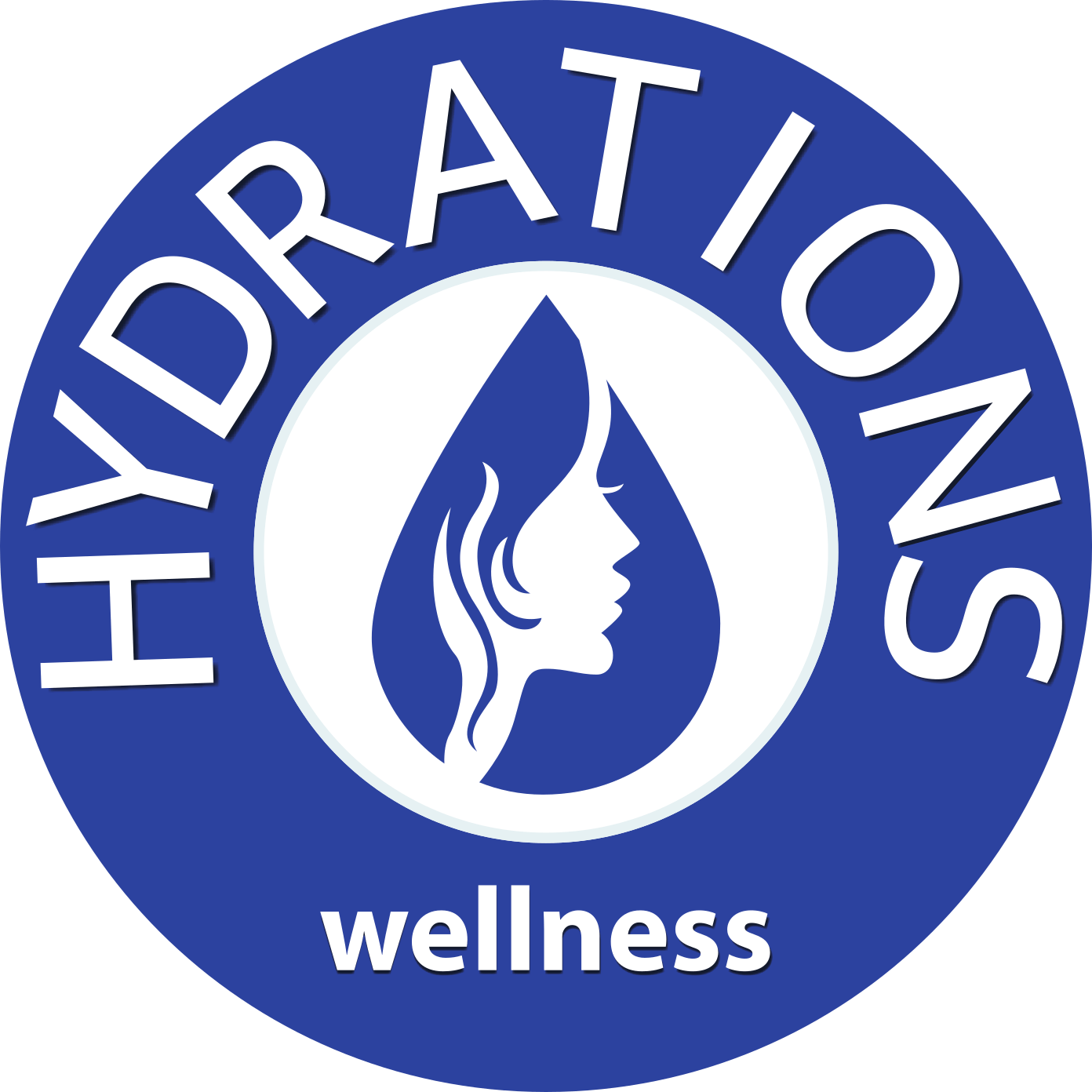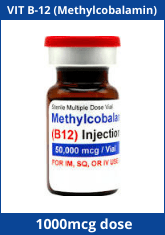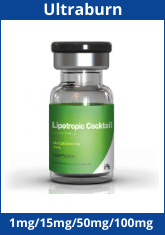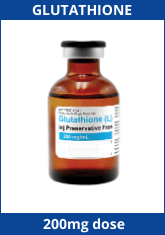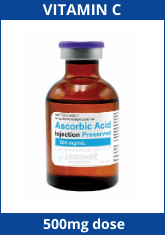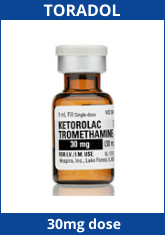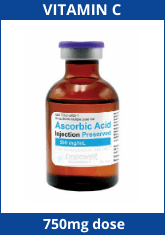


Hydrations LLC has teamed up with a nationally accredited laboratory to provide our clients with fast, reliable and affordable basic blood work solutions. We offer our clients:
- Fast Results
- Lowest Prices
- No Order/Script needed!
Time Sensitive Labs
Labs listed in Green require 10 hours of fasting before your blood draw
(You are allowed to have water, black coffee and take any medications while fasting.)
These labs should be scheduled between 10am and 12pm
Labs listed in Red require your blood to be drawn before 11am.
Lab Testing FAQ
What Payment Methods do you accept?
We accept Credit/Debit/FSA cards, Check or Cash
How do I get my results?
You will have the option of email, mail, faxed or pickup.
Will you go over my results with me?
No. We only provide the testing service. We do not review or make recommendation as far as which labs to get done, or what your results mean. You will need to share your results with your practitioner. (We will call you if you have a result that is considered “A Critical Lab value”)
What if I need a test not listed?
We are able to perform almost any blood test. (We do not do Urine, Saliva, Hair, etc at this location) Just contact us at (833) 372-9522 or HydrationsWellness@gmail.com with the test you need and we can provide you
Individual Test Directory
| Description | Test Cost | |||||||||||||||||||||||||||||||||||||||||||
|---|---|---|---|---|---|---|---|---|---|---|---|---|---|---|---|---|---|---|---|---|---|---|---|---|---|---|---|---|---|---|---|---|---|---|---|---|---|---|---|---|---|---|---|---|
ABO GRP AND RH TYPE Test Details AKA - Blood Type ABO type and Rh are needed to identify candidates for Rh immune globulin and to assess the risk of hemolytic disease of the newborn. | $24 | |||||||||||||||||||||||||||||||||||||||||||
Absolute Lymphocyte Count Test Details Increased understanding of immunodeficiency syndrome and AIDS have identified the importance of absolute lymphocyte count in addition to the specific cell type such as CD4 lymphocytes. In pediatric ages up to 14 years old, acute infectious lymphocytosis is a clinical disorder, suspected to be of enterovirus-Coxsackie A subgroup that may have upper respiratory symptoms, fever, diarrhea and abdominal pain or a totally asymptomatic clinical course. Other conditions with absolute lymphocytosis are B. pertussis infection and lymphocytic leukemoid reaction. The most commonly known lymphocytosis with atypical morphology is due to cytomegalovirus and infectious mononucleosis. The malignant forms of absolute lymphocytosis are mostly due to lymphoproliferative disorders. Includes
| $33 | |||||||||||||||||||||||||||||||||||||||||||
ALBUMIN Test Details Serum albumin measurements are used in the monitoring and treatment of numerous diseases involving primarily the liver and kidney. Its main value lies in the follow-up therapy where improvement in the serum albumin level is the best sign of successful medical treatment. There may also be a loss of albumin in the gastrointestinal tract, in the urine by the damaged kidney or direct loss of albumin through the skin. More than 50% of patients with gluten enteropathy have depressed albumin. The only cause of increased albumin is dehydration; there is no naturally occurring hyperalbuminemia. Reference Range(s) 3.6-5.1 g/dL | $18 | |||||||||||||||||||||||||||||||||||||||||||
Allergy, Gluten (IgE) Test Details This test is an allergen-specific IgE antibody test that quantifies an individual’s IgE response to gluten. It is an in vitro quantitative assay, which is intended to be used in conjunction with other clinical information to aid in the diagnosis of food allergy Reference Range(s) Positive or Negative | $27 | |||||||||||||||||||||||||||||||||||||||||||
ALLERGY PPROFILE (Molds) Test Details IgE allergy testing for: Alternaria alternata (m6) Aspergillus fumigatus (m3) Cladosporium herbarum (m2) Mucor racemosus (m4) Penicillium notatum (m1) Stemphylium botryosum (m10) If you do not wish to have the entire panel done, you can get results for any specific allergen from the results list below. (Each individual test is $23) | $57 | |||||||||||||||||||||||||||||||||||||||||||
ALLERGY PROFILE (Foods) Test Details IgE allergy testing for: Almond (f20) Cashew Nut (f202) Codfish (f3) Cow's Milk (f2) Egg White (f1) Hazelnut (f17) Peanut (f13) Salmon (f41) Scallop (f338) Sesame Seed (f10) Shrimp (f24) Soybean (f14) Tuna (f40) Walnut (f256) Wheat (f4) If you do not wish to have the entire panel done, you can get results for any specific allergen from the results list below. (Each individual test is $23) | $129 | |||||||||||||||||||||||||||||||||||||||||||
ALLERGY PROFILE (Seafood) Test Details IgE allergy testing for: Codfish (f3) Crab (f23) Lobster (f80) Salmon (f41) Shrimp (f24) Tuna (f40) If you do not wish to have the entire panel done, you can get results for any specific allergen from the results list below. (Each individual test is $23) | $58 | |||||||||||||||||||||||||||||||||||||||||||
ALLERGY PROFILE (Tree Nut) Test Details IgE allergy testing for: Almond Brazil Nut Cashew Nut Hazelnut Macadamia Nut Peanut Pecan Nut Pistachio Walnut If you do not wish to have the entire panel done, you can get results for any specific allergen from the results list below. (Each individual test is $23) | $78 | |||||||||||||||||||||||||||||||||||||||||||
ALLERGY PROFILE (Respiratory) Test Details IgE allergy testing for: Alternaria alternata (a mold) (m6) Aspergillus fumigatus (m3) Bermuda grass (Cynodon dactylon) (g2) Cat dander (e1) Cladosporium herbarum (Hormodendrum) (m2) Cockroach (i6) Common Ragweed (short) (w1) Cottonwood (Populous deltoides) (t14) Dermatophagoides farinae (d2) Dermatophagoides pteronyssinus (d1) Dog dander (e5) Elm (t8) Maple (box elder) (t1) Maple leaf sycamore, London Plane (t11) Mountain cedar (Juniperus sabinoides) (t6) Mouse Urine Proteins (e72) Mulberry (t70) Oak (t7) Pecan/Hickory (Carya soecue, pecan) (t22) Penicillium notatum (m1) Rough marsh elder (Iva) (w16) Rough pigweed (Amaranthus retroflexus) (w14) Russian thistle (Saltwort, Salsola kali) (w11) Timothy grass (Phleum pratense) (g6) Walnut (Juglans californica) (t10) White ash (Fraxinus americana) (t15) If you do not wish to have the entire panel done, you can get results for any specific allergen from the results list below. (Each individual test is $23) | $210 | |||||||||||||||||||||||||||||||||||||||||||
Alpha-Fetoprotein, Tumor Marker Test Details Elevation of serum AFP above values found in healthy individuals occurs in several malignant diseases, most notably nonseminomatous testicular cancer and primary hepatocellular carcinoma. AFP is not recommended as a screening procedure to detect cancer in the general population. Reference Range(s)
| $27 | |||||||||||||||||||||||||||||||||||||||||||
AMYLASE Test Details The major sources of amylase are the pancreas and the salivary glands. The most common cause of elevation of serum amylase is inflammation of the pancreas (pancreatitis). In acute pancreatitis, serum amylase begins to rise within 6-24 hours, remains elevated for a few days and returns to normal in 3-7 days. Other causes of elevated serum amylase are inflammation of salivary glands (mumps), biliary tract disease and bowel obstruction. Elevated serum amylase can also be seen with drugs (e.g., morphine) which constrict the pancreatic duct sphincter preventing excretion of amylase into the intestine. Reference Range(s) 21-101 U/L | $21 | |||||||||||||||||||||||||||||||||||||||||||
ANA Screen,IFA, with Reflex to Titer and Pattern Test Details This immunofluorescence assay (IFA) is often ordered as part of an initial diagnostic evaluation of individuals with clinical suspicion of autoimmune diseases associated with antinuclear antibodies (ANAs). The American College of Rheumatology recommends IFA on human epithelial type 2 (HEp-2) cells as the gold standard method for ANA testing because of its overall high sensitivity [1]. ANAs are associated with several autoimmune diseases, such as systemic lupus erythematosus, systemic sclerosis, mixed connective tissue disease, polymyositis, primary biliary cholangitis, rheumatoid arthritis, juvenile rheumatoid arthritis, Sjogren syndrome, and autoimmune hepatitis. The laboratory evaluation for individuals with clinical suspicion of these autoimmune diseases often begins with an ANA screen. Knowing the ANA titer can be helpful in interpreting positive ANA results. A titer of at least 1:40 is considered positive, but low-positive titers are not uncommon in healthy individuals. Higher titers are generally associated with greater likelihood of autoimmune disease Reference Range(s) ANA Screen: Negative ANA Titer: <1:40 Negative 1:40-1:80 Low antibody level >1:80 Elevated antibody level | $48 | |||||||||||||||||||||||||||||||||||||||||||
Anaplasma phagocytophilum Antibodies (IgG, IgM) Test Details Anaplasma phagocytophilum is a tick-borne agent that causes an acute febrile illness that often resembles Rocky Mountain spotted fever. Reference Range(s)
| $78 | |||||||||||||||||||||||||||||||||||||||||||
APOLIPOPROTEIN EVALUATION Test Details Apolipoprotein A1 is the primary protein associated with HDL cholesterol. Like HDL cholesterol, increased concentrations are associated with reduced risk of cardiovascular disease. Apolipoprotein B-100 is the primary protein associated with LDL cholesterol and other lipid particles. Like LDL cholesterol, increased concentrations are associated with increased risk of cardiovascular disease. The ratio of these two apolipoproteins correlates with risk of cardiovascular disease. Apolipoprotein A1 Apolipoprotein B Apolipoprotein B/A1 Ratio Reference Range(s) Apolipoprotein A1
Cardiovascular event risk category cut points (optimal, high) are based on the AMORIS study, Walldius G et al. J Intern Med. 2004;255:188-205.
Cardiovascular event risk category cut points (optimal, moderate, high) are based on National Lipid Association recommendations-Jacobson TA et al. J of Clin Lipid. 2015; 9: 129-169 and Jellinger PS et al. Endocr Pract. 2017;23(Suppl 2):1-87. Apolipoprotein B/A1 Ratio
| $36 | |||||||||||||||||||||||||||||||||||||||||||
ARSENIC Test Details This assay is used to monitor exposure to arsenic, wellness, and therapy during treatment of chronic myelocytic leukemia. Avoid seafood consumption for 48 hours prior to sample collection Reference Range(s) <23 mcg/L | $27 | |||||||||||||||||||||||||||||||||||||||||||
Babesia microti Antibodies (IgG, IgM), IFA Test Details Babesia serological testing is used to diagnose infection by the Babesia tick-borne protozoan. Infection may cause hemolytic anemia. Reference Range(s)
| $79 | |||||||||||||||||||||||||||||||||||||||||||
BETA-2 MICROTGLOBULIN Test Details Beta-2-microglobulin normally passes through the glomerulus into the proximal tubule where much of it is reabsorbed. Serum levels are therefore an index of glomerular function. When impaired, serum levels rise in inverse ratio to glomerular filtration rate. Increased amounts of beta-2-microglobulin are excreted in several renal disorders, e.g., Balkan nephropathy, heavy metal poisoning and renal tubular disease due to therapeutic agents. Serial levels of beta-2-microglobulin in serum and urine are used to evaluate transplant viability and anticipate rejection. Following a successful graft, serum levels decline toward normal. Increasing serum levels provide an early sign of rejection. Elevated levels are also noted in lymphproliferative disorders, neoplasms (malignant and benign), inflammatory disease, and autoimmune diseases such as systemic lupus erythematosus (SLE) and Sjögren's disease. <2.51 mg/L | $33 | |||||||||||||||||||||||||||||||||||||||||||
Bilirubin, Total Test Details Measurement of the levels of bilirubin is used in the diagnosis and treatment of liver, hemolytic, hematologic, and metabolic disorders, including hepatitis and gallbladder obstructive disease. | $18 | |||||||||||||||||||||||||||||||||||||||||||
Bilirubin, Direct Test Details Measurement of the levels of bilirubin is used in the diagnosis and treatment of liver, hemolytic, hematologic, and metabolic disorders, including hepatitis and gall bladder obstruction. The assessment of direct bilirubin is helpful in the differentiation of hepatic disorders. The increase in total bilirubin associated with obstructive jaundice is primarily due to the direct (conjugated) fraction. Both direct and indirect bilirubin are increased in the serum with hepatitis. Reference Range(s) <0.2 mg/dL | $18 | |||||||||||||||||||||||||||||||||||||||||||
Bilirubin, Fractionated Test Details Measurement of the levels of bilirubin is used in the diagnosis and treatment of liver, hemolytic, hematologic, and metabolic disorders, including hepatitis and gall bladder obstructive disease. Includes: Bilirubin Direct Bilirubin, Indirect Bilirubin, Total | $28 | |||||||||||||||||||||||||||||||||||||||||||
C-REACTIVE PROTEIN (CRP) Test Details Increased CRP levels are found in inflammatory conditions including: bacterial infection, rheumatic fever, active arthritis, myocardial infarction, malignancies and in the post-operative state. This test cannot detect the relatively small elevations of CRP that are associated with increased cardiovascular risk. <8.0 mg/L | $19 | |||||||||||||||||||||||||||||||||||||||||||
CA 125 Test Details The CA 125 level can provide prognostic information in the follow-up management of patients with ovarian carcinoma. The assay should be used as an adjunctive test in the management of ovarian cancer patients. CA 125 is not recommended as a cancer screening procedure to detect cancer in the general population. Reference Range(s) <35 U/mL | $24 | |||||||||||||||||||||||||||||||||||||||||||
CA 15-3 Test Details CA 15-3 may be useful for monitoring patients with metastatic breast cancer and certain ovarian cancers. The CA 15-3 values from sequential samples have a high correlation with the clinical course in most patients with metastatic breast cancer. Reference Range(s) <32 U/mL | $28 | |||||||||||||||||||||||||||||||||||||||||||
CA 19-9 Test Details A large percentage of patients with gastrointestinal tumors (such as pancreatic, liver, gastric, colorectal tumors) and some other malignancies have been shown to have elevated serum CA 19-9 levels. Serum CA 19-9 levels may be useful for monitoring disease activity or predicting relapse following treatment. CA 19-9 should not be used as a screening test. Reference Range(s) <34 U/mL | $26 | |||||||||||||||||||||||||||||||||||||||||||
CA 27.29 Test Details CA 27.29 may be useful for monitoring patients for metastatic breast cancer. Reference Range(s) <38 U/mL | $29 | |||||||||||||||||||||||||||||||||||||||||||
Common Lab Panels
We have created some groupings of the most common tests by category below.
If the title is in Green, It means you must fast 12 hours before the test. If the title is in Red, it means it is a morning lab you must schedule by 11am.
| Description | Panel Cost | ||||||||||||||||||||||||||||||||||||||||||||||||||||||||||||||||||||||||||||||||||||||||||||||||||||||||||||||||||||||||||||||||||||||||||||||||||||||||||||||||||||||||||||||||||||||||||||||||||||||||||||||||||||||||||||||||||||||||||||||||||||||||||||||||||||||||||||||||||||||||||||||||||||||||||||||||||||||||||||||||||||||||||||||||||||||||||||||||||||||||||||||||||||||||||||||||||||||||||||||||||||||||||||||||||||||||||||||||||||||||||||||||||||||||||||||||||||||||||||||||||||||||||||||||||||||||||||||||||||||||||||||||||||||||||||||||||||||||||||||||||||||||||||||||||||||||||||||||||||||||||||||||||||||||||||||||||||||||||||||||||||||||||
|---|---|---|---|---|---|---|---|---|---|---|---|---|---|---|---|---|---|---|---|---|---|---|---|---|---|---|---|---|---|---|---|---|---|---|---|---|---|---|---|---|---|---|---|---|---|---|---|---|---|---|---|---|---|---|---|---|---|---|---|---|---|---|---|---|---|---|---|---|---|---|---|---|---|---|---|---|---|---|---|---|---|---|---|---|---|---|---|---|---|---|---|---|---|---|---|---|---|---|---|---|---|---|---|---|---|---|---|---|---|---|---|---|---|---|---|---|---|---|---|---|---|---|---|---|---|---|---|---|---|---|---|---|---|---|---|---|---|---|---|---|---|---|---|---|---|---|---|---|---|---|---|---|---|---|---|---|---|---|---|---|---|---|---|---|---|---|---|---|---|---|---|---|---|---|---|---|---|---|---|---|---|---|---|---|---|---|---|---|---|---|---|---|---|---|---|---|---|---|---|---|---|---|---|---|---|---|---|---|---|---|---|---|---|---|---|---|---|---|---|---|---|---|---|---|---|---|---|---|---|---|---|---|---|---|---|---|---|---|---|---|---|---|---|---|---|---|---|---|---|---|---|---|---|---|---|---|---|---|---|---|---|---|---|---|---|---|---|---|---|---|---|---|---|---|---|---|---|---|---|---|---|---|---|---|---|---|---|---|---|---|---|---|---|---|---|---|---|---|---|---|---|---|---|---|---|---|---|---|---|---|---|---|---|---|---|---|---|---|---|---|---|---|---|---|---|---|---|---|---|---|---|---|---|---|---|---|---|---|---|---|---|---|---|---|---|---|---|---|---|---|---|---|---|---|---|---|---|---|---|---|---|---|---|---|---|---|---|---|---|---|---|---|---|---|---|---|---|---|---|---|---|---|---|---|---|---|---|---|---|---|---|---|---|---|---|---|---|---|---|---|---|---|---|---|---|---|---|---|---|---|---|---|---|---|---|---|---|---|---|---|---|---|---|---|---|---|---|---|---|---|---|---|---|---|---|---|---|---|---|---|---|---|---|---|---|---|---|---|---|---|---|---|---|---|---|---|---|---|---|---|---|---|---|---|---|---|---|---|---|---|---|---|---|---|---|---|---|---|---|---|---|---|---|---|---|---|---|---|---|---|---|---|---|---|---|---|---|---|---|---|---|---|---|---|---|---|---|---|---|---|---|---|---|---|---|---|---|---|---|---|---|---|---|---|---|---|---|---|---|---|---|---|---|---|---|---|---|---|---|---|---|---|---|---|---|---|---|---|---|---|---|---|---|---|---|---|---|---|---|---|---|---|---|---|---|---|---|---|---|---|---|---|---|---|---|---|---|---|---|---|---|---|---|---|---|---|---|---|---|---|---|---|---|---|---|---|---|---|---|---|---|---|---|---|---|---|---|---|---|---|---|---|---|---|---|---|---|---|---|---|---|---|---|---|---|---|---|---|---|---|---|---|---|---|---|---|---|---|---|---|---|---|---|---|---|---|---|---|---|---|---|
| Wellness Panel 1 Complete Metabolic Panel (CMP) Test Details
Hemoglobin A1c Test Details To assist with control of blood glucose levels, the American Diabetes Association (ADA) has recommended glycated hemoglobin testing (HbA1c) twice a year for patients with stable glycemia, and quarterly for patients with poor glucose control. Interpretative ranges are based on ADA guidelines. Reference Range(s) <5.7 % of total hemoglobin Complete Blood Count (CBC w/DIFF/PLT) Test Details A complete blood count is used as a screening test for various disease states to include: anemia, leukemia and inflammatory processes.
Lipid Panel Test Details The Lipid Panel includes evaluation of total cholesterol, HDL-cholesterol, triglyceride (TG), LDL-cholesterol (calculated), cholesterol/HDL ratio (calculated), and non-HDL cholesterol. This panel is useful in the detection, classification, and monitoring of hyperlipidemia, especially those expected to have highly elevated TG levels. Reference Range(s)
| $49 | ||||||||||||||||||||||||||||||||||||||||||||||||||||||||||||||||||||||||||||||||||||||||||||||||||||||||||||||||||||||||||||||||||||||||||||||||||||||||||||||||||||||||||||||||||||||||||||||||||||||||||||||||||||||||||||||||||||||||||||||||||||||||||||||||||||||||||||||||||||||||||||||||||||||||||||||||||||||||||||||||||||||||||||||||||||||||||||||||||||||||||||||||||||||||||||||||||||||||||||||||||||||||||||||||||||||||||||||||||||||||||||||||||||||||||||||||||||||||||||||||||||||||||||||||||||||||||||||||||||||||||||||||||||||||||||||||||||||||||||||||||||||||||||||||||||||||||||||||||||||||||||||||||||||||||||||||||||||||||||||||||||||||||
| Wellness Panel 2 Complete Metabolic Panel (CMP) Test Details
Hemoglobin A1c Test Details To assist with control of blood glucose levels, the American Diabetes Association (ADA) has recommended glycated hemoglobin testing (HbA1c) twice a year for patients with stable glycemia, and quarterly for patients with poor glucose control. Interpretative ranges are based on ADA guidelines. Reference Range(s) <5.7 % of total hemoglobin Complete Blood Count (CBC w/DIFF/PLT) Test Details A complete blood count is used as a screening test for various disease states to include: anemia, leukemia and inflammatory processes.
Lipid Panel Test Details The Lipid Panel includes evaluation of total cholesterol, HDL-cholesterol, triglyceride (TG), LDL-cholesterol (calculated), cholesterol/HDL ratio (calculated), and non-HDL cholesterol. This panel is useful in the detection, classification, and monitoring of hyperlipidemia, especially those expected to have highly elevated TG levels. Reference Range(s)
Magnesium Test Details Magnesium measurements are used in the diagnosis and treatment of hypomagnesemia (abnormally low plasma levels of magnesium) and hypermagnesemia (abnormally high plasma levels of magnesium). Magnesium is decreased in chronic nephritis, acute pancreatitis, and alcoholic cirrhosis. It is increased in acute or chronic renal failure and Addison's Disease. Reference Range(s) 1.5-2.5 mg/dLTSH Test Details For differential diagnosis of primary, secondary, and tertiary hypothyroidism. Also useful in screening for hyperthyroidism. This assay allows adjustment of exogenous thyroxine dosage in hypothyroid patients and in patients on suppressive thyroxine therapy for thyroid neoplasia.
Uric Acid Test Details Serum uric acid measurements are useful in the diagnosis and treatment of numerous renal and metabolic disorders, including renal failure, gout, leukemia, psoriasis, starvation or other wasting conditions, and in patients receiving cytotoxic drugs.
Iron, Total and TIBC Test Details Serum iron quantification is useful in confirming the diagnosis of iron-deficiency anemia or hemochromatosis. The measurement of total iron binding in the same specimen may facilitate the clinician's ability to distinguish between low serum iron levels caused by iron deficiency from those related to inflammatory neoplastic disorders. The assay for iron measures the amount of iron which is bound to transferrin. The total iron binding capacity (TIBC) measures the amount of iron that would appear in blood if all the transferrin were saturated with iron. It is an indirect measurement of transferrin concentrations but expressed as an iron measurement. To obtain the percent saturation, the serum iron is divided by the TIBC which gives the actual amount of saturated transferrin. The percent saturation is low in iron deficiency and high in iron storage diseases. Reference Range(s): Iron, Total
Iron Binding Capacity
% Saturation
Gamma Glutamyl Transferase (GGT) Test Details Elevated GGT is found in all forms of liver disease. Measurement of GGT is used in the diagnosis and treatment of alcoholic cirrhosis, as well as primary and secondary liver tumors. It is more sensitive than alkaline phosphatase, the transaminases, and leucine aminopeptidase in detecting obstructive jaundice, cholangitis, and cholecystitis. Normal levels of GGT are seen in skeletal diseases; thus, GGT in serum can be used to ascertain whether a disease, suggested by elevated alkaline phosphatase, is skeletal or hepatobiliary. Reference Range(s)
| $99 | ||||||||||||||||||||||||||||||||||||||||||||||||||||||||||||||||||||||||||||||||||||||||||||||||||||||||||||||||||||||||||||||||||||||||||||||||||||||||||||||||||||||||||||||||||||||||||||||||||||||||||||||||||||||||||||||||||||||||||||||||||||||||||||||||||||||||||||||||||||||||||||||||||||||||||||||||||||||||||||||||||||||||||||||||||||||||||||||||||||||||||||||||||||||||||||||||||||||||||||||||||||||||||||||||||||||||||||||||||||||||||||||||||||||||||||||||||||||||||||||||||||||||||||||||||||||||||||||||||||||||||||||||||||||||||||||||||||||||||||||||||||||||||||||||||||||||||||||||||||||||||||||||||||||||||||||||||||||||||||||||||||||||||
| Complete Thyroid Panel Thyroid Panel w/TSH Test Details Thyroid Panel: T3 Uptake, T3 Free, T4 (Thyroxine) Total, Free T4 Index (T7) Reference Range(s) T3 Uptake: 22-35.5%, Decreased: Pregnancy, estrogens, hyperproteinemia, acute intermittent porphyria. T4 (Thyroxine) Total: For diagnosis of hypothyroidism and hyperthyroidism.
Free T3 <1 Month Not established TSH For differential diagnosis of primary, secondary, and tertiary hypothyroidism. Also useful in screening for hyperthyroidism. This assay allows adjustment of exogenous thyroxine dosage in hypothyroid patients and in patients on suppressive thyroxine therapy for thyroid neoplasia.
Thyroid Peroxidase and Thyroglobulin AB Test Details Measurement of thyroglobulin antibodies and thyroid peroxidase antibodies is useful in the diagnosis and management of a variety of thyroid disorders including autoimmune thyroiditis, Hashimoto's Disease, Graves Disease and certain types of goiter. Reference Range(s) Thyroid Peroxidase Ab <9 IU/mL Thyroglobulin Ab ≤1 IU/mL Reverse T3 Test Details 3,3',5'-Triiodothyronine (reverse T3, rT3) is, along with 3,3,5'-Triiodothyronine (T3) a deiodinated metabolite of thyroxine (T4), the major secretory product of the thyroid gland and is secreted into the bloodstream. Unlike T3, however, rT3 is thought to be metabolically inert. The process of 5'-monodeiodination that converts T4 to T3, and rT3 to diiodothyronine (DTT) is inhibited in a wide variety of conditions, collectively referred to as nonthyroidal illnesses (NTI) or the 'euthyroid sick' state. These conditions include fasting, malnutrition, poorly controlled diabetes mellitus, trauma, surgery, and systemic illness. Consequently, in patients with NTI the serum T3 level typically decreases, and the rT3 often, but not always, increases. Reference Range(s) Reverse T3 8-25 ng/dL Reverse T3 Takes 7-10 days to get resulted | $130 | ||||||||||||||||||||||||||||||||||||||||||||||||||||||||||||||||||||||||||||||||||||||||||||||||||||||||||||||||||||||||||||||||||||||||||||||||||||||||||||||||||||||||||||||||||||||||||||||||||||||||||||||||||||||||||||||||||||||||||||||||||||||||||||||||||||||||||||||||||||||||||||||||||||||||||||||||||||||||||||||||||||||||||||||||||||||||||||||||||||||||||||||||||||||||||||||||||||||||||||||||||||||||||||||||||||||||||||||||||||||||||||||||||||||||||||||||||||||||||||||||||||||||||||||||||||||||||||||||||||||||||||||||||||||||||||||||||||||||||||||||||||||||||||||||||||||||||||||||||||||||||||||||||||||||||||||||||||||||||||||||||||||||||
| Complete EBV Panel Epstein-Barr Virus (EBV) AB Panel Test Details Primary infection by EBV causes infectious mononucleosis, usually a self-limiting disease in children and young adults. Infection with EBV can cause lymphoproliferative disorders including tumors. VCA-IgM is typically detectable at clinical presentation, then declines to undetectable levels within a month in young children and within 3 months in other individuals. VCA-IgG is typically detectable at clinical presentation, and persists for life. EBNA IgG typically appears during convalescence (3-4 months after clinical presentation) and remains detectable for life. Reference Range(s) Epstein-Barr Virus VCA Antibody (IgM)
Epstein-Barr Virus VCA Antibody (IgG)
Epstein-Barr Virus Nuclear Antigen (EBNA) Antibody (IgG)
Epstein-Barr Virus Early Antigen D Antibody (IgG) Test Details Primary infection by EBV causes infectious mononucleosis, usually a self-limiting disease in children and young adults. Infection with EBV can cause lymphoproliferative disorders including tumors. IgG recognizing Early Antigen D typically appears within a month after clinical presentation and is transient, lasting only 3-4 months. Persistently elevated levels suggest reactivation or persistence of EBV infection. Reference Range(s)
| $83 | ||||||||||||||||||||||||||||||||||||||||||||||||||||||||||||||||||||||||||||||||||||||||||||||||||||||||||||||||||||||||||||||||||||||||||||||||||||||||||||||||||||||||||||||||||||||||||||||||||||||||||||||||||||||||||||||||||||||||||||||||||||||||||||||||||||||||||||||||||||||||||||||||||||||||||||||||||||||||||||||||||||||||||||||||||||||||||||||||||||||||||||||||||||||||||||||||||||||||||||||||||||||||||||||||||||||||||||||||||||||||||||||||||||||||||||||||||||||||||||||||||||||||||||||||||||||||||||||||||||||||||||||||||||||||||||||||||||||||||||||||||||||||||||||||||||||||||||||||||||||||||||||||||||||||||||||||||||||||||||||||||||||||||
| Cardiac Health Panel Cardiac CRP Test Details Useful in predicting risk for cardiovascular disease.
Jellinger PS et al. Endocr Pract. 2017;23(Suppl 2):1-87. For ages >17 years
Homocysteine Test Details An elevated concentration of homocysteine is an independent risk factor for cardiovascular disease. When used in conjunction with methylmalonic acid (MMA), these tests are useful to diagnose and monitor vitamin B12 (cobalamin) and folic acid deficiency and are often useful in evaluating macrocytosis (an elevated MCV, an erythrocytic index). Reference Range(s):
Lipid Panel Test Details The Lipid Panel includes evaluation of total cholesterol, HDL-cholesterol, triglyceride (TG), LDL-cholesterol (calculated), cholesterol/HDL ratio (calculated), and non-HDL cholesterol. This panel is useful in the detection, classification, and monitoring of hyperlipidemia, especially those expected to have highly elevated TG levels. Reference Range(s)
| $88 | ||||||||||||||||||||||||||||||||||||||||||||||||||||||||||||||||||||||||||||||||||||||||||||||||||||||||||||||||||||||||||||||||||||||||||||||||||||||||||||||||||||||||||||||||||||||||||||||||||||||||||||||||||||||||||||||||||||||||||||||||||||||||||||||||||||||||||||||||||||||||||||||||||||||||||||||||||||||||||||||||||||||||||||||||||||||||||||||||||||||||||||||||||||||||||||||||||||||||||||||||||||||||||||||||||||||||||||||||||||||||||||||||||||||||||||||||||||||||||||||||||||||||||||||||||||||||||||||||||||||||||||||||||||||||||||||||||||||||||||||||||||||||||||||||||||||||||||||||||||||||||||||||||||||||||||||||||||||||||||||||||||||||||
| Inflammation Panel Complete Blood Count (CBC w/DIFF/PLT) Test Details A complete blood count is used as a screening test for various disease states to include: anemia, leukemia and inflammatory processes.
Sed Rate (ESR) Test Details Useful in differentiating inflammatory and neoplastic diseases and as an index of disease severity. CRP is also useful in monitoring inflammatory disease states.
C-REACTIVE PROTEIN (CRP) Test Details Increased CRP levels are found in inflammatory conditions including: bacterial infection, rheumatic fever, active arthritis, myocardial infarction, malignancies and in the post-operative state. This test cannot detect the relatively small elevations of CRP that are associated with increased cardiovascular risk. <8.0 mg/L Uric Acid Test Details Serum uric acid measurements are useful in the diagnosis and treatment of numerous renal and metabolic disorders, including renal failure, gout, leukemia, psoriasis, starvation or other wasting conditions, and in patients receiving cytotoxic drugs.
| $78 | ||||||||||||||||||||||||||||||||||||||||||||||||||||||||||||||||||||||||||||||||||||||||||||||||||||||||||||||||||||||||||||||||||||||||||||||||||||||||||||||||||||||||||||||||||||||||||||||||||||||||||||||||||||||||||||||||||||||||||||||||||||||||||||||||||||||||||||||||||||||||||||||||||||||||||||||||||||||||||||||||||||||||||||||||||||||||||||||||||||||||||||||||||||||||||||||||||||||||||||||||||||||||||||||||||||||||||||||||||||||||||||||||||||||||||||||||||||||||||||||||||||||||||||||||||||||||||||||||||||||||||||||||||||||||||||||||||||||||||||||||||||||||||||||||||||||||||||||||||||||||||||||||||||||||||||||||||||||||||||||||||||||||||
| Women's Hormone Panel Estrogen, Total Test Details Estrogens are secreted by the gonads, adrenal glands, and placenta. Total estrogens provide an overall picture of estrogen status for men and women. Reference Range(s)
DHEA-Sulfate Test Details DHEA-S is the sulfated form of DHEA and is the major androgen produced by the adrenal glands. This test is used in the differential diagnosis of hirsute or virilized female patients and for the diagnosis of isolated premature adrenarche and adrenal tumors. About 10% of hirsute women with Polycystic Ovarian Syndrome (PCOS) have elevated DHEA-S but normal levels of other androgens.
FSH & LH Test Details FSH and LH are secreted by the anterior pituitary in response to gonadotropin-releasing hormone (GNRH) secreted by the hypothalamus. In both males and females, FSH and LH secretion is regulated by a balance of positive and negative feedback mechanisms involving the hypothalamic-pituitary axis, the reproductive organs, and the pituitary and sex steroid hormones. FSH and LH play a critical role in maintaining the normal function of the male and female reproductive systems. Abnormal FSH levels with corresponding increased or decreased levels of LH, estrogens, progesterone, and testosterone are associated with a number of pathological conditions. Increased FSH levels are associated with menopause and primary ovarian hypofunction in females and primary hypogonadism in males. Decreased levels of FSH are associated with primary ovarian hyper-function in females and primary hypergonadism in males. Normal or decreased levels of FSH are associated with polycystic ovary disease in females. In males, LH is also called interstitial cell-stimulating hormone (ICSH). Abnormal LH levels with corresponding increased or decreased levels of FSH, estrogens, progesterone, and testosterone are associated with a number of pathological conditions. Increased LH levels are associated with menopause, primary ovarian hypofunction, and polycystic ovary disease in females and primary hypo-gonadism in males. Decreased LH levels are associated with primary ovarian hyperfunction in females and primary hyper-gonadism in males. Reference Range(s) FSH
LH
Progesterone Test Details Levels increase sharply during the luteal phase of the menstrual cycle. The level increases from 9 to 32 weeks of pregnancy. Reference Range(s)
Children (<18 years old): Progesterone reference ranges established on post-pubertal patient population. Reference range not established for pre-pubertal patients using this assay. For pre-pubertal patients, the Nichols progesterone, LC/MS/MS assay is recommended (test code 17183). Testosterone Panel Test Details Testosterone Panel (Adult), Immunoassay: Due to changes in testosterone levels throughout the day, two morning (8:00-10:00 a.m.) specimens obtained on different days are recommended by The Endocrine Society for screening. Reference Range(s) Testosterone, Total, (Adult), Immunoassay
Bioavailable Testosterone
Cortisol, Total Test Details Cortisol is increased in Cushing's Disease and decreased in Addison's Disease (adrenal insufficiency).
| $176 | ||||||||||||||||||||||||||||||||||||||||||||||||||||||||||||||||||||||||||||||||||||||||||||||||||||||||||||||||||||||||||||||||||||||||||||||||||||||||||||||||||||||||||||||||||||||||||||||||||||||||||||||||||||||||||||||||||||||||||||||||||||||||||||||||||||||||||||||||||||||||||||||||||||||||||||||||||||||||||||||||||||||||||||||||||||||||||||||||||||||||||||||||||||||||||||||||||||||||||||||||||||||||||||||||||||||||||||||||||||||||||||||||||||||||||||||||||||||||||||||||||||||||||||||||||||||||||||||||||||||||||||||||||||||||||||||||||||||||||||||||||||||||||||||||||||||||||||||||||||||||||||||||||||||||||||||||||||||||||||||||||||||||||
| Women's Health Panel Complete Metabolic Panel (CMP) Test Details
Hemoglobin A1c Test Details To assist with control of blood glucose levels, the American Diabetes Association (ADA) has recommended glycated hemoglobin testing (HbA1c) twice a year for patients with stable glycemia, and quarterly for patients with poor glucose control. Interpretative ranges are based on ADA guidelines. Reference Range(s) <5.7 % of total hemoglobin Complete Blood Count (CBC w/DIFF/PLT) Test Details A complete blood count is used as a screening test for various disease states to include: anemia, leukemia and inflammatory processes.
Lipid Panel Test Details The Lipid Panel includes evaluation of total cholesterol, HDL-cholesterol, triglyceride (TG), LDL-cholesterol (calculated), cholesterol/HDL ratio (calculated), and non-HDL cholesterol. This panel is useful in the detection, classification, and monitoring of hyperlipidemia, especially those expected to have highly elevated TG levels. Reference Range(s)
Magnesium Test Details Magnesium measurements are used in the diagnosis and treatment of hypomagnesemia (abnormally low plasma levels of magnesium) and hypermagnesemia (abnormally high plasma levels of magnesium). Magnesium is decreased in chronic nephritis, acute pancreatitis, and alcoholic cirrhosis. It is increased in acute or chronic renal failure and Addison's Disease. Reference Range(s) 1.5-2.5 mg/dLUric Acid Test Details Serum uric acid measurements are useful in the diagnosis and treatment of numerous renal and metabolic disorders, including renal failure, gout, leukemia, psoriasis, starvation or other wasting conditions, and in patients receiving cytotoxic drugs.
Iron, Total and TIBC Test Details Serum iron quantification is useful in confirming the diagnosis of iron-deficiency anemia or hemochromatosis. The measurement of total iron binding in the same specimen may facilitate the clinician's ability to distinguish between low serum iron levels caused by iron deficiency from those related to inflammatory neoplastic disorders. The assay for iron measures the amount of iron which is bound to transferrin. The total iron binding capacity (TIBC) measures the amount of iron that would appear in blood if all the transferrin were saturated with iron. It is an indirect measurement of transferrin concentrations but expressed as an iron measurement. To obtain the percent saturation, the serum iron is divided by the TIBC which gives the actual amount of saturated transferrin. The percent saturation is low in iron deficiency and high in iron storage diseases. Reference Range(s): Iron, Total
Iron Binding Capacity
% Saturation
Gamma Glutamyl Transferase (GGT) Test Details Elevated GGT is found in all forms of liver disease. Measurement of GGT is used in the diagnosis and treatment of alcoholic cirrhosis, as well as primary and secondary liver tumors. It is more sensitive than alkaline phosphatase, the transaminases, and leucine aminopeptidase in detecting obstructive jaundice, cholangitis, and cholecystitis. Normal levels of GGT are seen in skeletal diseases; thus, GGT in serum can be used to ascertain whether a disease, suggested by elevated alkaline phosphatase, is skeletal or hepatobiliary. Reference Range(s)
Estrogen, Total Test Details Estrogens are secreted by the gonads, adrenal glands, and placenta. Total estrogens provide an overall picture of estrogen status for men and women. Reference Range(s)
DHEA-Sulfate Test Details DHEA-S is the sulfated form of DHEA and is the major androgen produced by the adrenal glands. This test is used in the differential diagnosis of hirsute or virilized female patients and for the diagnosis of isolated premature adrenarche and adrenal tumors. About 10% of hirsute women with Polycystic Ovarian Syndrome (PCOS) have elevated DHEA-S but normal levels of other androgens.
FSH & LH Test Details FSH and LH are secreted by the anterior pituitary in response to gonadotropin-releasing hormone (GNRH) secreted by the hypothalamus. In both males and females, FSH and LH secretion is regulated by a balance of positive and negative feedback mechanisms involving the hypothalamic-pituitary axis, the reproductive organs, and the pituitary and sex steroid hormones. FSH and LH play a critical role in maintaining the normal function of the male and female reproductive systems. Abnormal FSH levels with corresponding increased or decreased levels of LH, estrogens, progesterone, and testosterone are associated with a number of pathological conditions. Increased FSH levels are associated with menopause and primary ovarian hypofunction in females and primary hypogonadism in males. Decreased levels of FSH are associated with primary ovarian hyper-function in females and primary hypergonadism in males. Normal or decreased levels of FSH are associated with polycystic ovary disease in females. In males, LH is also called interstitial cell-stimulating hormone (ICSH). Abnormal LH levels with corresponding increased or decreased levels of FSH, estrogens, progesterone, and testosterone are associated with a number of pathological conditions. Increased LH levels are associated with menopause, primary ovarian hypofunction, and polycystic ovary disease in females and primary hypo-gonadism in males. Decreased LH levels are associated with primary ovarian hyperfunction in females and primary hyper-gonadism in males. Reference Range(s) FSH
LH
Progesterone Test Details Levels increase sharply during the luteal phase of the menstrual cycle. The level increases from 9 to 32 weeks of pregnancy. Reference Range(s)
Children (<18 years old): Progesterone reference ranges established on post-pubertal patient population. Reference range not established for pre-pubertal patients using this assay. For pre-pubertal patients, the Nichols progesterone, LC/MS/MS assay is recommended (test code 17183). Vitamin D, 25-Hydroxy Test Details Measurement of serum 25-OH vitamin D concentrations provide a good index of circulating vitamin D activity in patients not suffering from renal disease. Lower than normal 25-OH vitamin D levels can result from a dietary deficiency, poor absorption of the vitamin or impaired metabolism of the sterol in the liver. A 25-OH vitamin D deficiency can lead to bone diseases such as rickets and osteomalacia. Above normal levels can lead to hypercalcemia. Fasting preferred but not required 30-100 ng/mL Thyroid Panel w/TSH Test Details Thyroid Panel: T3 Uptake, T4 (Thyroxine) Total, Free T4 Index (T7) Reference Range(s) T3 Uptake: 22-35.5%, Decreased: Pregnancy, estrogens, hyperproteinemia, acute intermittent porphyria. T4 (Thyroxine) Total: For diagnosis of hypothyroidism and hyperthyroidism.
TSH For differential diagnosis of primary, secondary, and tertiary hypothyroidism. Also useful in screening for hyperthyroidism. This assay allows adjustment of exogenous thyroxine dosage in hypothyroid patients and in patients on suppressive thyroxine therapy for thyroid neoplasia.
Homocysteine Test Details An elevated concentration of homocysteine is an independent risk factor for cardiovascular disease. When used in conjunction with methylmalonic acid (MMA), these tests are useful to diagnose and monitor vitamin B12 (cobalamin) and folic acid deficiency and are often useful in evaluating macrocytosis (an elevated MCV, an erythrocytic index). Reference Range(s):
| $315 | ||||||||||||||||||||||||||||||||||||||||||||||||||||||||||||||||||||||||||||||||||||||||||||||||||||||||||||||||||||||||||||||||||||||||||||||||||||||||||||||||||||||||||||||||||||||||||||||||||||||||||||||||||||||||||||||||||||||||||||||||||||||||||||||||||||||||||||||||||||||||||||||||||||||||||||||||||||||||||||||||||||||||||||||||||||||||||||||||||||||||||||||||||||||||||||||||||||||||||||||||||||||||||||||||||||||||||||||||||||||||||||||||||||||||||||||||||||||||||||||||||||||||||||||||||||||||||||||||||||||||||||||||||||||||||||||||||||||||||||||||||||||||||||||||||||||||||||||||||||||||||||||||||||||||||||||||||||||||||||||||||||||||||
| Men's Hormone Panel PSA, total Test Details Elevated serum PSA concentrations have been reported in men with prostate cancer, benign prostatic hypertrophy, and inflammatory conditions of the prostate. Reference Range(s)
Testosterone Panel Test Details Testosterone, Total, Males (Adult), Immunoassay: Due to changes in testosterone levels throughout the day, two morning (8:00-10:00 a.m.) specimens obtained on different days are recommended by The Endocrine Society for screening. Reference Range(s) Testosterone, Total, Males (Adult), Immunoassay
Bioavailable Testosterone
DHEA-Sulfate Test Details DHEA-S is the sulfated form of DHEA and is the major androgen produced by the adrenal glands. This test is used in the differential diagnosis of hirsute or virilized female patients and for the diagnosis of isolated premature adrenarche and adrenal tumors. About 10% of hirsute women with Polycystic Ovarian Syndrome (PCOS) have elevated DHEA-S but normal levels of other androgens.
| $94 | ||||||||||||||||||||||||||||||||||||||||||||||||||||||||||||||||||||||||||||||||||||||||||||||||||||||||||||||||||||||||||||||||||||||||||||||||||||||||||||||||||||||||||||||||||||||||||||||||||||||||||||||||||||||||||||||||||||||||||||||||||||||||||||||||||||||||||||||||||||||||||||||||||||||||||||||||||||||||||||||||||||||||||||||||||||||||||||||||||||||||||||||||||||||||||||||||||||||||||||||||||||||||||||||||||||||||||||||||||||||||||||||||||||||||||||||||||||||||||||||||||||||||||||||||||||||||||||||||||||||||||||||||||||||||||||||||||||||||||||||||||||||||||||||||||||||||||||||||||||||||||||||||||||||||||||||||||||||||||||||||||||||||||
| Men's Health Panel Complete Metabolic Panel (CMP) Test Details
Hemoglobin A1c Test Details To assist with control of blood glucose levels, the American Diabetes Association (ADA) has recommended glycated hemoglobin testing (HbA1c) twice a year for patients with stable glycemia, and quarterly for patients with poor glucose control. Interpretative ranges are based on ADA guidelines. Reference Range(s) <5.7 % of total hemoglobin Complete Blood Count (CBC w/DIFF/PLT) Test Details A complete blood count is used as a screening test for various disease states to include: anemia, leukemia and inflammatory processes.
Lipid Panel Test Details The Lipid Panel includes evaluation of total cholesterol, HDL-cholesterol, triglyceride (TG), LDL-cholesterol (calculated), cholesterol/HDL ratio (calculated), and non-HDL cholesterol. This panel is useful in the detection, classification, and monitoring of hyperlipidemia, especially those expected to have highly elevated TG levels. Reference Range(s)
Magnesium Test Details Magnesium measurements are used in the diagnosis and treatment of hypomagnesemia (abnormally low plasma levels of magnesium) and hypermagnesemia (abnormally high plasma levels of magnesium). Magnesium is decreased in chronic nephritis, acute pancreatitis, and alcoholic cirrhosis. It is increased in acute or chronic renal failure and Addison's Disease. Reference Range(s) 1.5-2.5 mg/dLTSH Test Details For differential diagnosis of primary, secondary, and tertiary hypothyroidism. Also useful in screening for hyperthyroidism. This assay allows adjustment of exogenous thyroxine dosage in hypothyroid patients and in patients on suppressive thyroxine therapy for thyroid neoplasia.
Uric Acid Test Details Serum uric acid measurements are useful in the diagnosis and treatment of numerous renal and metabolic disorders, including renal failure, gout, leukemia, psoriasis, starvation or other wasting conditions, and in patients receiving cytotoxic drugs.
Iron, Total and TIBC Test Details Serum iron quantification is useful in confirming the diagnosis of iron-deficiency anemia or hemochromatosis. The measurement of total iron binding in the same specimen may facilitate the clinician's ability to distinguish between low serum iron levels caused by iron deficiency from those related to inflammatory neoplastic disorders. The assay for iron measures the amount of iron which is bound to transferrin. The total iron binding capacity (TIBC) measures the amount of iron that would appear in blood if all the transferrin were saturated with iron. It is an indirect measurement of transferrin concentrations but expressed as an iron measurement. To obtain the percent saturation, the serum iron is divided by the TIBC which gives the actual amount of saturated transferrin. The percent saturation is low in iron deficiency and high in iron storage diseases. Reference Range(s): Iron, Total
Iron Binding Capacity
% Saturation
Gamma Glutamyl Transferase (GGT) Test Details Elevated GGT is found in all forms of liver disease. Measurement of GGT is used in the diagnosis and treatment of alcoholic cirrhosis, as well as primary and secondary liver tumors. It is more sensitive than alkaline phosphatase, the transaminases, and leucine aminopeptidase in detecting obstructive jaundice, cholangitis, and cholecystitis. Normal levels of GGT are seen in skeletal diseases; thus, GGT in serum can be used to ascertain whether a disease, suggested by elevated alkaline phosphatase, is skeletal or hepatobiliary. Reference Range(s)
PSA, total Test Details Elevated serum PSA concentrations have been reported in men with prostate cancer, benign prostatic hypertrophy, and inflammatory conditions of the prostate. Reference Range(s)
DHEA-SULFATE Test Details DHEA-S is the sulfated form of DHEA and is the major androgen produced by the adrenal glands. This test is used in the differential diagnosis of hirsute or virilized female patients and for the diagnosis of isolated premature adrenarche and adrenal tumors. About 10% of hirsute women with Polycystic Ovarian Syndrome (PCOS) have elevated DHEA-S but normal levels of other androgens.
Vitamin D, 25-Hydroxy Test Details Measurement of serum 25-OH vitamin D concentrations provide a good index of circulating vitamin D activity in patients not suffering from renal disease. Lower than normal 25-OH vitamin D levels can result from a dietary deficiency, poor absorption of the vitamin or impaired metabolism of the sterol in the liver. A 25-OH vitamin D deficiency can lead to bone diseases such as rickets and osteomalacia. Above normal levels can lead to hypercalcemia. Fasting preferred but not required 30-100 ng/mL Homocysteine Test Details An elevated concentration of homocysteine is an independent risk factor for cardiovascular disease. When used in conjunction with methylmalonic acid (MMA), these tests are useful to diagnose and monitor vitamin B12 (cobalamin) and folic acid deficiency and are often useful in evaluating macrocytosis (an elevated MCV, an erythrocytic index). Reference Range(s):
Cardiac CRP Test Details Useful in predicting risk for cardiovascular disease.
Jellinger PS et al. Endocr Pract. 2017;23(Suppl 2):1-87. For ages >17 years
| $238 | ||||||||||||||||||||||||||||||||||||||||||||||||||||||||||||||||||||||||||||||||||||||||||||||||||||||||||||||||||||||||||||||||||||||||||||||||||||||||||||||||||||||||||||||||||||||||||||||||||||||||||||||||||||||||||||||||||||||||||||||||||||||||||||||||||||||||||||||||||||||||||||||||||||||||||||||||||||||||||||||||||||||||||||||||||||||||||||||||||||||||||||||||||||||||||||||||||||||||||||||||||||||||||||||||||||||||||||||||||||||||||||||||||||||||||||||||||||||||||||||||||||||||||||||||||||||||||||||||||||||||||||||||||||||||||||||||||||||||||||||||||||||||||||||||||||||||||||||||||||||||||||||||||||||||||||||||||||||||||||||||||||||||||
